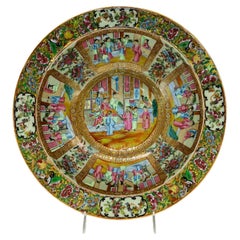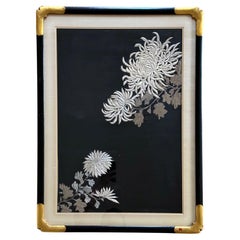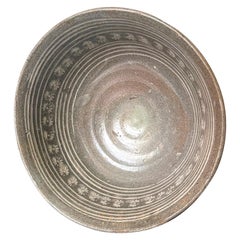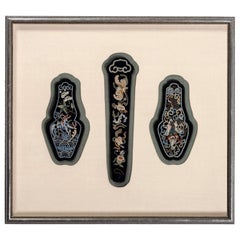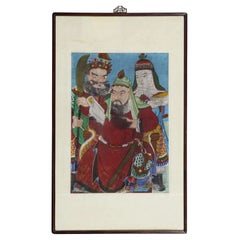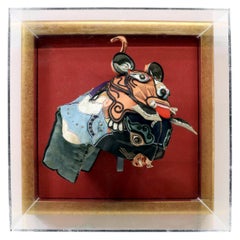Atlanta - Asian Art and Furniture
19th Century Chinese Chinese Export Antique Atlanta - Asian Art and Furniture
Enamel
Early 1900s Japanese Meiji Antique Atlanta - Asian Art and Furniture
Silk, Wood
16th Century Korean Archaistic Antique Atlanta - Asian Art and Furniture
Ceramic
19th Century Chinese Chinese Export Antique Atlanta - Asian Art and Furniture
Silk, Wood
Early 20th Century Korean Folk Art Atlanta - Asian Art and Furniture
Textile, Brocade
Early 20th Century Chinese Chinese Export Atlanta - Asian Art and Furniture
Cotton, Silk, Plexiglass, Wood
19th Century Chinese Qing Antique Atlanta - Asian Art and Furniture
Stone
Early 2000s Japanese Japonisme Atlanta - Asian Art and Furniture
Rope, Wood, Lacquer
Early 1900s Japanese Japonisme Antique Atlanta - Asian Art and Furniture
Porcelain
Early 1900s Japanese Japonisme Antique Atlanta - Asian Art and Furniture
Ceramic
15th Century and Earlier Persian Islamic Antique Atlanta - Asian Art and Furniture
Ceramic
19th Century Japanese Japonisme Antique Atlanta - Asian Art and Furniture
Silk, Paper
1950s Japanese Japonisme Vintage Atlanta - Asian Art and Furniture
Paper
1950s Japanese Japonisme Vintage Atlanta - Asian Art and Furniture
Wood, Paper
1910s Japanese Taisho Vintage Atlanta - Asian Art and Furniture
Paper
Early 20th Century Japanese Japonisme Atlanta - Asian Art and Furniture
Porcelain
19th Century Japanese Meiji Antique Atlanta - Asian Art and Furniture
Ceramic
19th Century Korean Antique Atlanta - Asian Art and Furniture
Ceramic
1750s Chinese Antique Atlanta - Asian Art and Furniture
Porcelain
1890s Japanese Japonisme Antique Atlanta - Asian Art and Furniture
Silk, Giltwood
20th Century Chinese Chinese Export Atlanta - Asian Art and Furniture
Copper, Enamel
1640s Chinese Antique Atlanta - Asian Art and Furniture
Porcelain
19th Century Korean Other Antique Atlanta - Asian Art and Furniture
Iron
Late 18th Century Persian Islamic Antique Atlanta - Asian Art and Furniture
Wood
Mid-20th Century Chinese Chinese Export Atlanta - Asian Art and Furniture
Silk, Wood
1950s Japanese Japonisme Vintage Atlanta - Asian Art and Furniture
Wood, Paper
1930s Japanese Japonisme Vintage Atlanta - Asian Art and Furniture
Wood, Paper
A good quality antique porcelain vase depicting two women picking flowers under a colorful tree. Lion head handles and story marked to verso.
Ap...
20th Century Chinese Chinese Export Atlanta - Asian Art and Furniture
Porcelain
18th Century Korean Archaistic Antique Atlanta - Asian Art and Furniture
Ceramic
19th Century Chinese Qing Antique Atlanta - Asian Art and Furniture
Stone
1640s Chinese Antique Atlanta - Asian Art and Furniture
Porcelain
19th Century Chinese Chinese Export Antique Atlanta - Asian Art and Furniture
Stone
20th Century Korean Other Atlanta - Asian Art and Furniture
Brass
19th Century Japanese Japonisme Antique Atlanta - Asian Art and Furniture
Ceramic
Late 19th Century Japanese Meiji Antique Atlanta - Asian Art and Furniture
Silk, Wood
Early 20th Century Chinese Chinese Export Atlanta - Asian Art and Furniture
Serpentine
19th Century Japanese Meiji Antique Atlanta - Asian Art and Furniture
Lacquer
20th Century Chinese Qing Atlanta - Asian Art and Furniture
Stone
1960s American Chinoiserie Vintage Atlanta - Asian Art and Furniture
Brass
19th Century Chinese Antique Atlanta - Asian Art and Furniture
Silk
16th Century Chinese Antique Atlanta - Asian Art and Furniture
Ceramic
Early 2000s Japanese Modern Atlanta - Asian Art and Furniture
Ceramic
Early 19th Century Burmese Archaistic Antique Atlanta - Asian Art and Furniture
Lacquer, Wood
Early 19th Century Chinese Qing Antique Atlanta - Asian Art and Furniture
Silk
Early 20th Century Chinese Other Atlanta - Asian Art and Furniture
Stone
1890s Japanese Japonisme Antique Atlanta - Asian Art and Furniture
Wood, Lacquer
17th Century Japanese Japonisme Antique Atlanta - Asian Art and Furniture
Ceramic
Early 20th Century Korean Other Atlanta - Asian Art and Furniture
Brass
20th Century Chinese Chinese Export Atlanta - Asian Art and Furniture
Stone
Late 19th Century Antique Atlanta - Asian Art and Furniture
Bronze
Mid-20th Century Japanese Japonisme Atlanta - Asian Art and Furniture
Wood
Early 20th Century Japanese Japonisme Atlanta - Asian Art and Furniture
Silk, Wood
19th Century Chinese Qing Antique Atlanta - Asian Art and Furniture
Stone
Late 18th Century Chinese Chinese Export Antique Atlanta - Asian Art and Furniture
Enamel
Mid-20th Century American Modern Atlanta - Asian Art and Furniture
Ceramic
20th Century Japanese Modern Atlanta - Asian Art and Furniture
Ceramic
19th Century Chinese Chinese Export Antique Atlanta - Asian Art and Furniture
Stone
19th Century Turkish Islamic Antique Atlanta - Asian Art and Furniture
Brocade, Silk, Wood
Early 20th Century Japanese Meiji Atlanta - Asian Art and Furniture
Ceramic
Early 19th Century Japanese Japonisme Antique Atlanta - Asian Art and Furniture
Brocade, Paper
Read More
Symbols of Happiness and Rebirth Adorn This Japanese Satsuma Bowl
Decorated with white cranes and the sought-after thousand-butterflies motif, the Meiji-period vessel offers both a celebration of traditional aesthetics and a clear reflection of the era’s appetite for exquisite export pieces.
Chicago’s Pagoda Red Has a Spirited Mix of Asian Antiques and Bold New Art
For 25 years, gallerist Betsy Nathan has leveraged her keen eye and key connections to bring a unique selection of rare finds to the market.
In L.A., Gallerist JF Chen Has Long Championed Eclectic Blue-Chip Design
Now working alongside his daughter Bianca, dealer Joel Chen has presented a most covetable array of antiques, art and contemporary creations for more than 40 years.
12 Calming Spaces Inspired by Japanese Design
From cherry-blossom-adorned walls paired with glamorous lighting to wood-paneled ceilings above checkerboard-patterned chairs, these 12 spaces seamlessly blend Eastern and Western aesthetics.
Rodrigo Rivero Lake’s Mexico City Showroom Is a Museum-Worthy Trove of Spanish Colonial and Asian Antiques
The dealer and curator has spent the past 50 years amassing a collection of exceptional art, furniture and architectural elements that trace the cultural influence of the Spanish empire from Europe to the Americas and beyond.
16 Refined Asian-Inspired Interiors
These spaces exemplify how Eastern elements elevate a home's decor.
